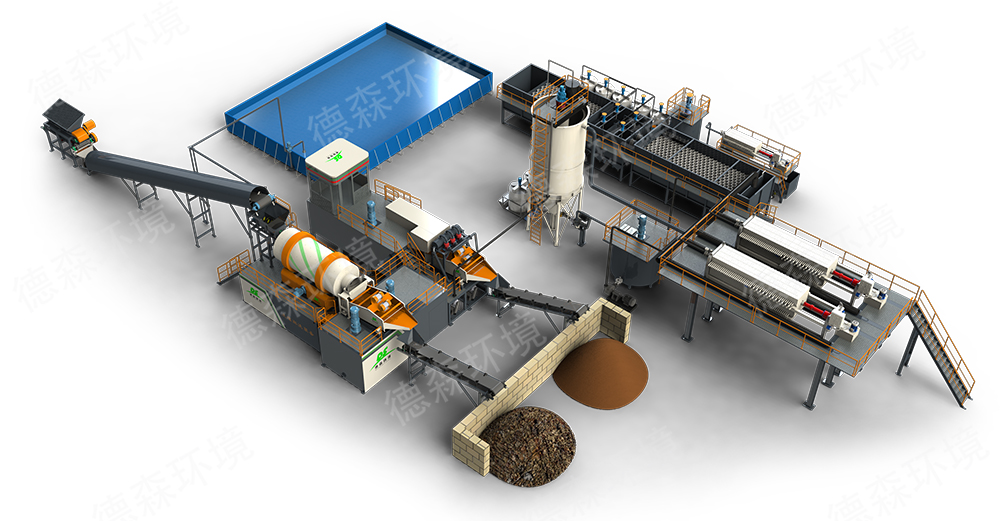Does the soil remediation industry require low carbon? Desen leaching equipment responded positively
In June 2021, the Ministry of Ecology and Environment and other six departments issued the "Guiding Opinions on Promoting Green and Low-Carbon Risk Control and Restoration of Soil Pollution"1, which proposed the goal of implementing the green and low-carbon concept in soil pollution risk c
In June 2021, the Ministry of Ecology and Environment and other six departments issued the "Guiding Opinions on Promoting Green and Low-Carbon Risk Control and Restoration of Soil Pollution"1, which proposed the goal of implementing the green and low-carbon concept in soil pollution risk control and restoration activities, Principles, measures and safeguard mechanisms.
The guidance pointed out that the concept of green and low-carbon restoration should be first implemented in soil pollution control of construction land. On the premise of ensuring the goal of soil pollution risk control and restoration, the process of soil pollution restoration should pay more attention to the conservation and efficient use of energy resources to achieve the maximum net environmental benefits. and minimize carbon emissions.
The guidance also proposes a series of specific green and low-carbon restoration measures, including: optimizing restoration plan design, selecting restoration technologies with low or negative carbon emissions; strengthening restoration process management to reduce energy consumption and waste generation; promoting green Purchasing and recycling, reducing raw material consumption and transportation costs; strengthening carbon emission accounting and monitoring, establishing a carbon emission reduction incentive mechanism, etc.

Is soil remediation really a high-carbon industry? Although there is no accurate carbon accounting model at present, there are still traces to follow. Studies have shown that gas phase extraction technology, cement kiln co-processing, and thermal desorption technology are not "carbon-saving", but solidification/stabilization technology, chemical leaching technology, chemical oxidation/reduction technology, etc., soil remediation efficiency is still slightly lower.
Desen soil washing equipment is a technology that uses chemical or biological agents to separate, transform and remove organic pollutants in soil. Desen soil washing equipment will actively respond to the green and low-carbon environmental protection policy, and has the following advantages:
1. It can effectively remove a variety of organic pollutants in the soil, such as petroleum, polycyclic aromatic hydrocarbons, pesticides, volatile organic compounds, etc., without causing secondary pollution or degradation of the soil;
2. It can save energy and resources, and reduce water resource consumption and waste liquid treatment costs by recycling eluent and recovering organic pollutants;
3. It can reduce carbon emissions. Compared with high-temperature treatment technologies such as incineration, leaching technology has lower energy consumption and does not produce a large amount of greenhouse gases;
4. It can adapt to different site conditions. Through mobile or fixed equipment, different scales and types of soil pollution sites can be treated on-site or off-site.
Therefore, it is necessary to strengthen the systematic layout of scientific and technological research and development in the field of multi-media collaborative governance of soil complex pollution and green and low-carbon restoration, accelerate the scientific and technological research on key common new materials and new equipment for green and low-carbon restoration, and compare and integrate green and low-carbon materials suitable for different scenarios. Low-carbon technology system.





